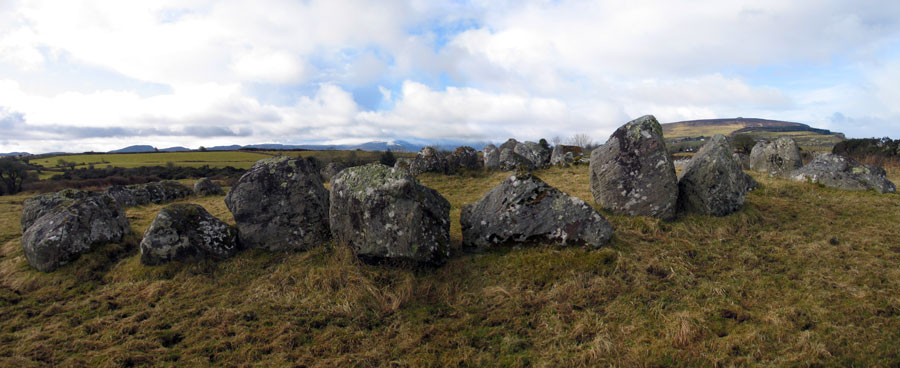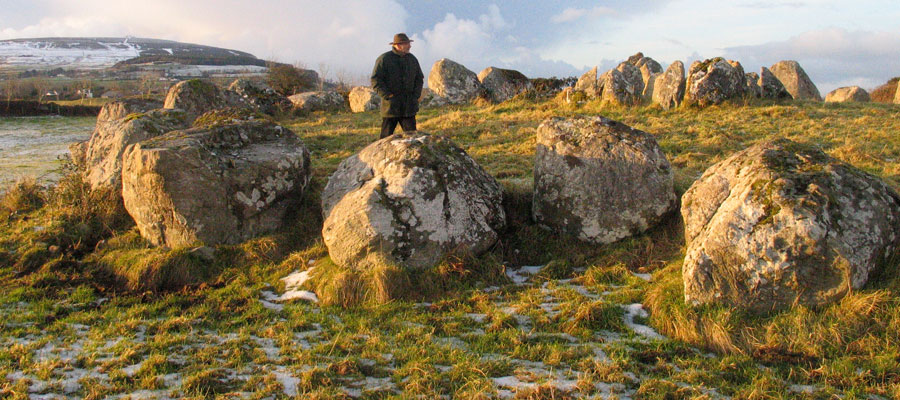Circle 27 at Carrowmore
Circle 27 is located by the Kilmackeown Road on the east edge of the main group of monument at Carrowmore. It is part of a chain of large intact circles which includes Circles 18, 19 and 26. This monument, along with circles 19 and 26 are not part of the Carrowmore Visitor Centre grounds. They are still in private ownership, and the owners do not mind visitors.
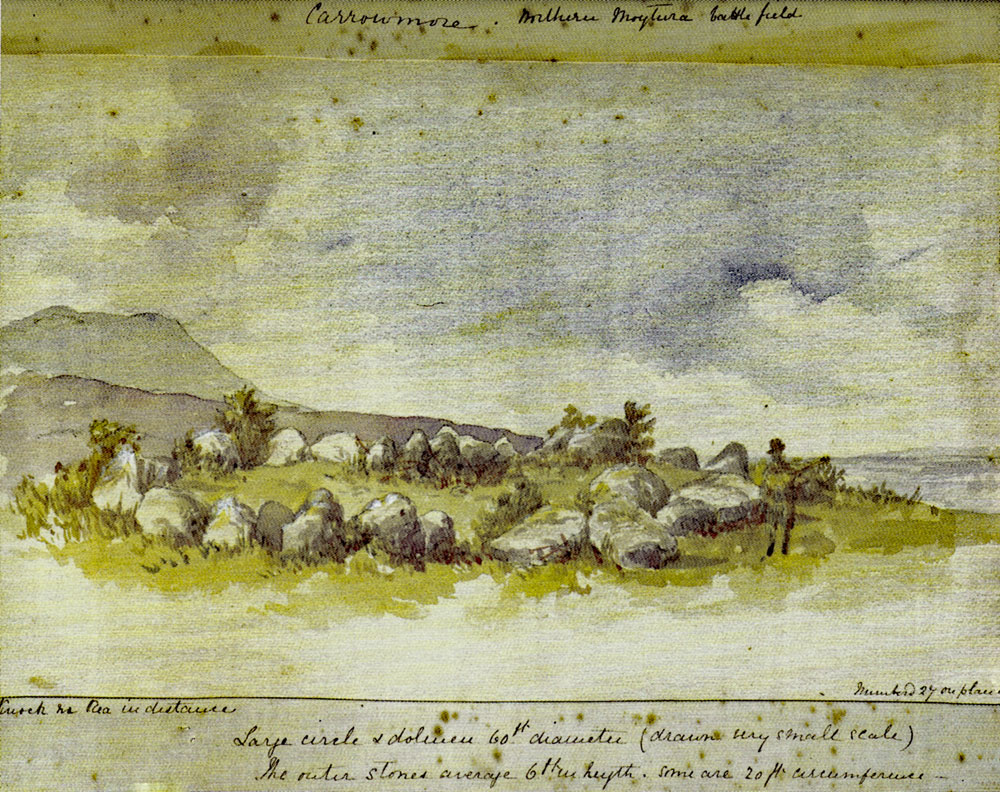
Circle 27 has a complete ring of huge gneiss boulders, the largest stones found in the series of circles at Carrowmore. These orthostats were originally placed standing upright although now they are mostly fallen over. The ring of stones would have been an impressive boundary when the stones were upright, not unlike teeth with their narrower points in the ground and their heavier ends in the air. Some of these stones would have been up to three meters tall when standing. Burenhult found that the huge circle stones had either been balanced on the old ground level or had been set in shallow sockets. The ring was supported by a stone packing of head-sized boulders which was more than three meters wide.
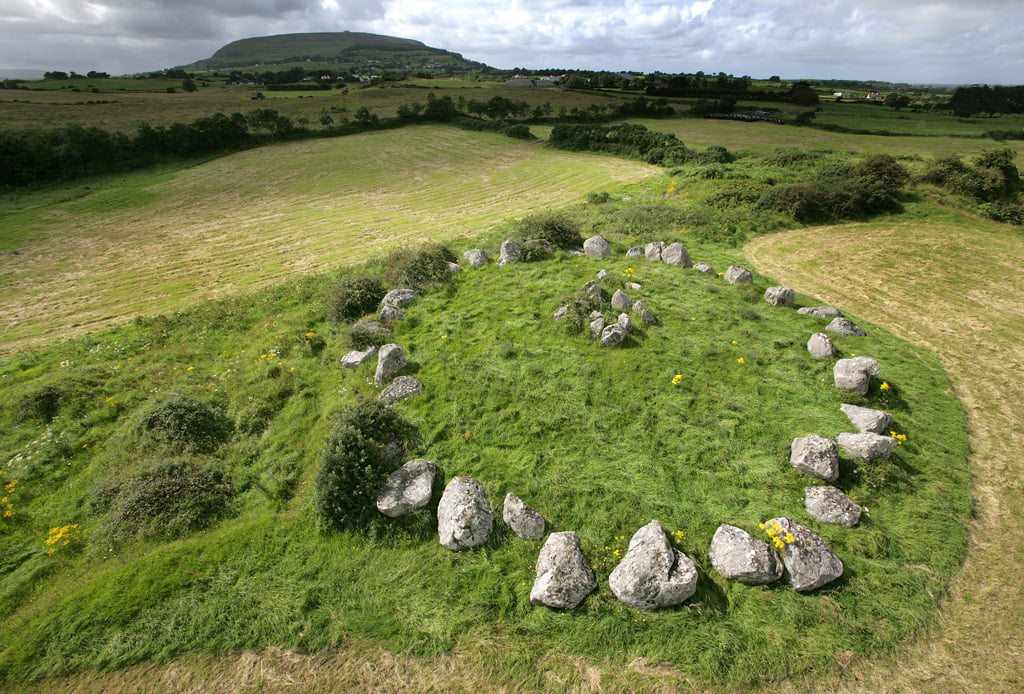
There are many fine chunks and bands of quartz and other amazing gneiss patterns within these boulders. Thirty-seven massive chunks of gneiss form the circle, which has a diameter of twenty meters. There is an inner circle of smaller stones which is just under fourteen meters in diameter. The monument was lucky to have survived intact, as extensive gravel quarrying took place on the west side of the circle, which has almost been undermined by the huge pit.
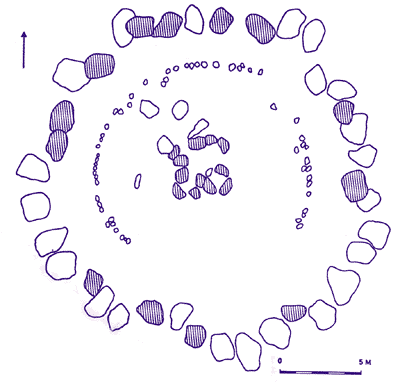
In 1904, more than 3,000 cartloads of gravel were removed from Carrowmore to use as fill for the foundations of a new factory in the Sligo docklands. Great damage was done to the east side of Carrowmore, the portion closest to the town, during this time. Sligo County Council had plans in the 1970's and again in the 1980's to use these huge gravel pits as landfill sites. A group of concerned locals persued the matter to the highest courst in the land and managed to save the Carrowmore Megalithic Complex from becoming a dump.
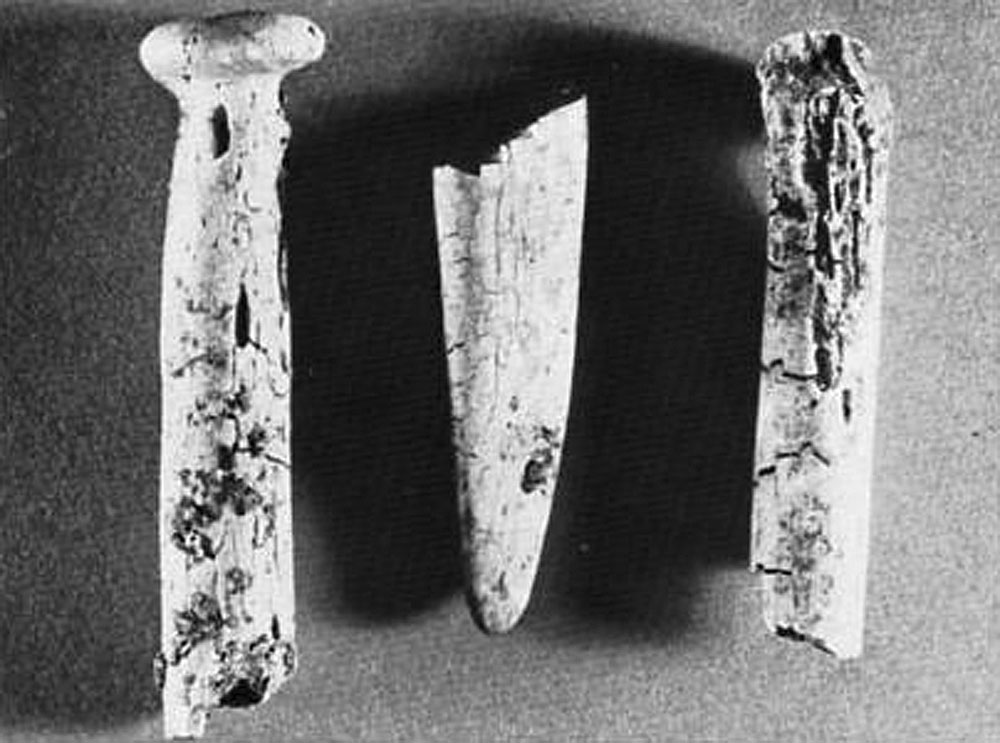
Photograph © Göran Burenhult.
Circle 27 has a large five by five meter chamber, the only cruciform example found at Carrowmore. The passage and chamber are formed of thirteen stones, some of which are gneiss boulders which have been split in half. There are two sillstones present, which divide the space and differenciate the passage from the chamber. The chamber of Carrowmore 27 is also one of the very few monuments here containing limestone slabs. There are two limestone blocks which probably formed part of the chamber roof.
The passage is oriented to the northwest, just to the right and north of Listoghil, the central monument at Carrowmore, and roughly points along the axis to the midsummer sunset. The chamber stones sit on the old ground level. They were not set in sockets, but were set inside a low stone packing which is bounded by the inner stone circle. Unlike the majority of the other circles within the complex, there is no tertre or platform present at Carrowmore 27.
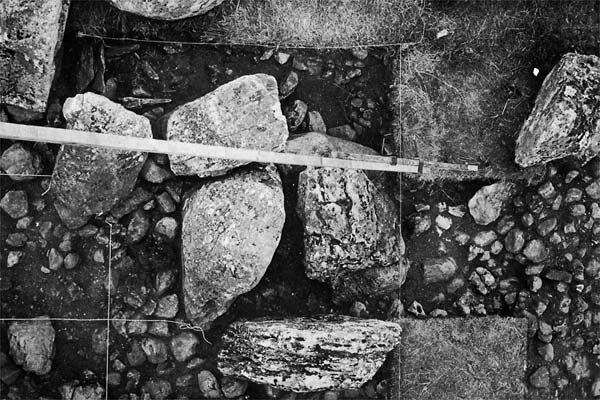
Photograph © Göran Burenhult.
William Gregory Wood-Martin, the local antiquarian excavated the chamber of Carrowmore 27 in the late 1880's, and found large quantities of both cremated and unburnt bone, many fragments of sea shells, pieces of bone and red antler pins, pottery fragments, pieces of quartz, and a flat bone ring, thought at the time to be whale bone, but now considered to be walrus ivory. A good quantity of human and animal teeth were found scattered throughout the chamber. A complete account of Wood-Martin's excavation, as printed by Borlase, is given on the next page.
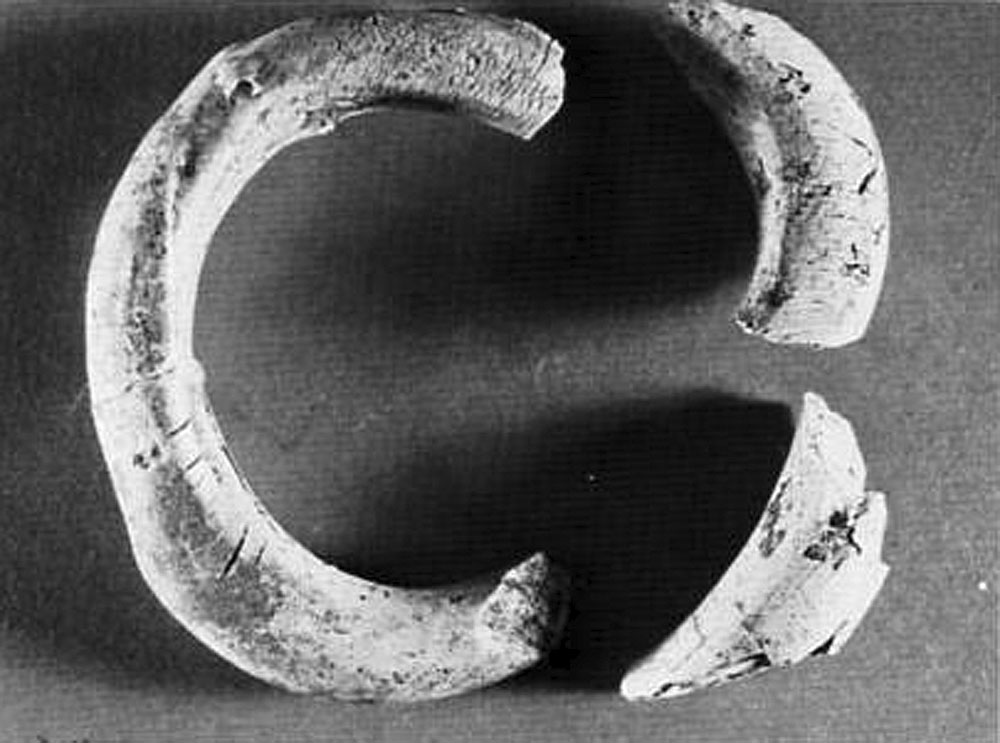
Photograph © Göran Burenhult.
Excavations
This monument was excavated by Swedish archaeologist Professor Gö:ran Burenhult in the late 1970's. About 8.5 kilograms of cremated and uncremated bones were found, mixed with fragments of sea shells. Fragments of red deer antler and bone pins, more pieces of rings made from either whale bone or walrus ivory, a stone bead, two chalk balls, and thirteen fragments of pottery were excavated within this monument. A small stone cist, which seems to be a later addition added in the bronze age, was found outside the entrance, which contained more cremated bone. Several fragments of flint and chert were found outside the chamber, and a flint knife was found just outside the circle.
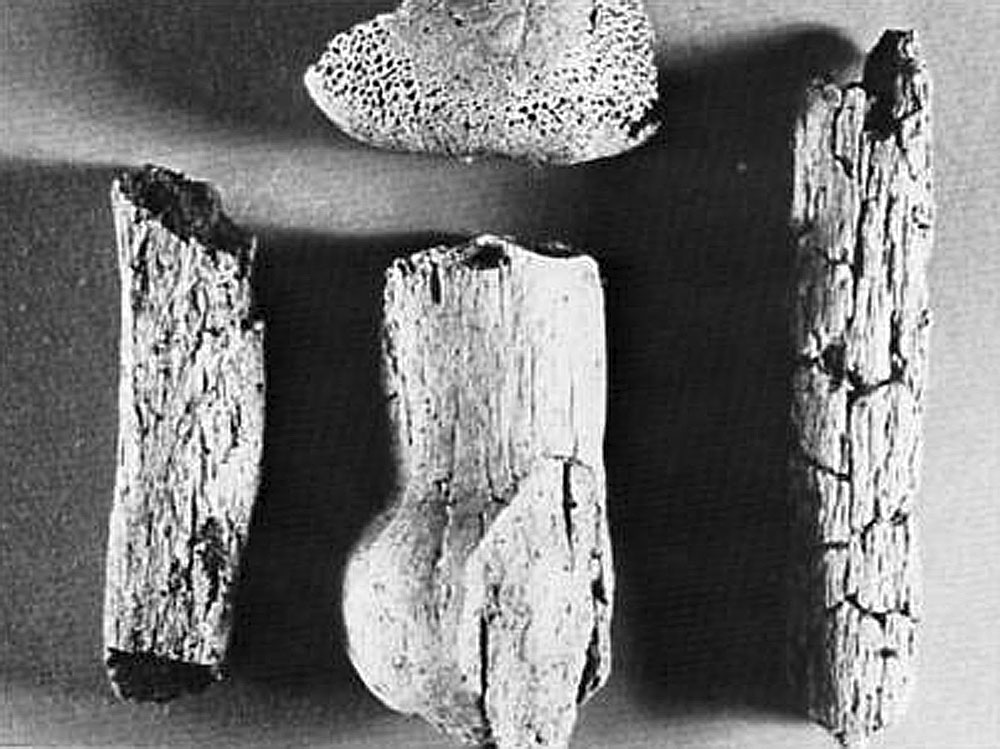
Photograph © Göran Burenhult.
The monument was dated using fragments of charcoal found in the stone packing which supports the ring of stones. The dates - 3950, 3900 and 3850 BC respectively are extremely early for Irish passage-graves, but in keeping with many of the other unusually early dates around Sligo.

